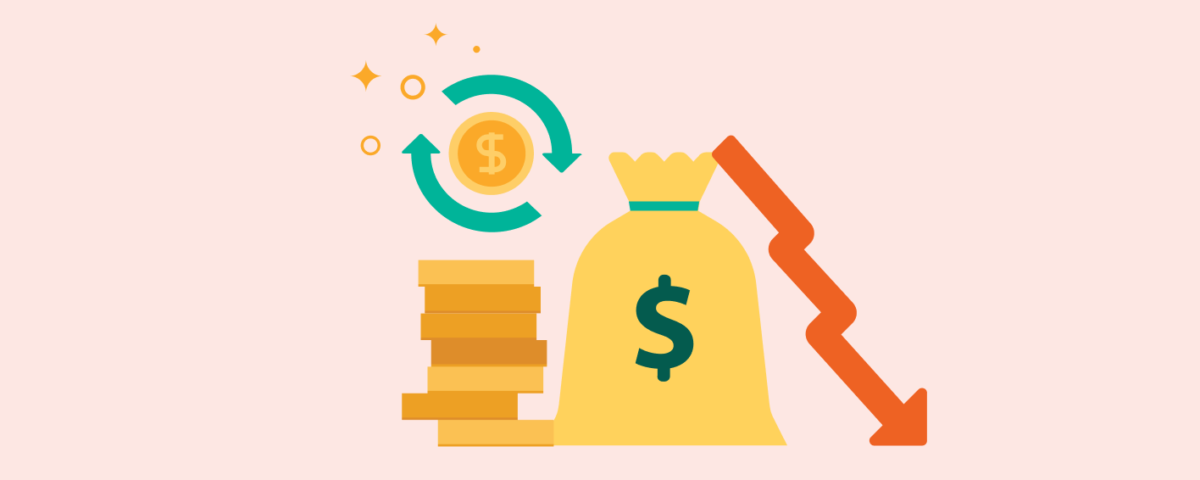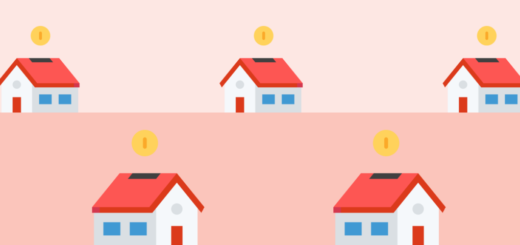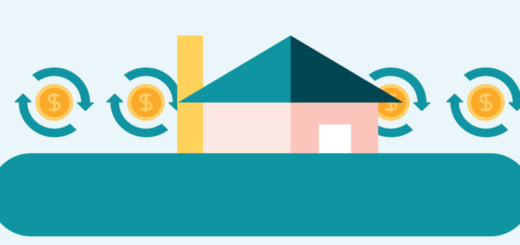Are you able to Refinance Your Mortgage After Bankruptcy?
Our goal is to provide you with the tools and confidence you need to improve your finances. Although all of us receive compensation from our companion lenders, whom we will usually identify, all opinions are our own. Credible Operations, Incorporation. NMLS # 1681276, can be referred to here as “Credible. ”
Personal bankruptcy can help you recover from financial difficulties but the process can impact your creditworthiness for several years.
For example , you may wish to refinance your mortgage to improve your own repayment options. While it isn’t really impossible to refinance right after bankruptcy, it can be harder to qualify.
Here is an overview of everything you can expect to refinance your home loan after bankruptcy:
Can you refinance after bankruptcy?
Yes, you can refinance your mortgage after bankruptcy, but having a personal bankruptcy on your credit report will make it more difficult to qualify.
It also depends on regardless of whether you file for Chapter 7 or Chapter 13 bankruptcy and the type of mortgage loan you’re looking to refinance. You may have to wait several years before you can start the mortgage refinancing procedure .
Should you be ready to refinance, Credible makes the process easy. You can see customized prequalified rates from our companion lenders in just a few minutes. We also provide transparency into lender fees that other evaluation sites typically don’t.
Find My Refi Rate
Checking prices will not affect your credit
Chapter 7 bankruptcy vs . Chapter 13 bankruptcy
Chapter seven and Chapter 13 are the two most common types of personal bankruptcy. Both filing options is able to reduce your total debt balance.
Here are some from the primary differences between Section 7 and Chapter 13 and how they can affect your own mortgage refinance :
| Chapter 7 | Chapter 13 |
|---|---|
| You’ll sell (liquidate) your own assets to pay off debt | You’ll enter a repayment plan to pay off debt |
| You can receive a discharge within six months of filing | You have to repay debt within 3-5 years before remaining balance is discharged |
| May result in home foreclosures | Stops foreclosures proceedings |
| Continues to be on your credit report for 10 years after you file | Remains on your credit report for the purpose of seven years after you document |
Minimum waiting period to apply for refinancing following the discharge date:
|
Least waiting period to apply for refinancing after the discharge date:
|
The bankruptcy code is complex and can impact your credit history and ability to refinance in other ways, so be sure to speak with a bankruptcy attorney for private guidance.
Chapter 7 bankruptcy
Chapter 7 bankruptcy, also referred to as liquidation bankruptcy, involves a person selling assets upfront to pay back outstanding debts. It’ll remain on your personal credit history pertaining to 10 years from the filing time.
As part of Chapter 7, a bankruptcy trustee — the person appointed by the court to oversee your personal bankruptcy — may sell some of your nonexempt assets to fulfill the payment requirements of the creditors. Nonexempt assets typically include:
- A second home
- A newer model car or even second car
- Stocks, bonds, and other purchases
- Jewelry
- Artwork
- Expensive clothing
- Valuable collections, such as a stamps collection or sports memorabilia
If the associated with your nonexempt assets is not enough to cover your debts, the trustee may foreclose in your home. This is primarily why is Chapter 7 riskier than Chapter 13.
How long does the Chapter 7 bankruptcy take? A Chapter 7 bankruptcy can take between four to six months to complete. As soon as you reach your discharge day, you’re no longer liable to pay back certain types of debt.
Waiting period for Chapter 7 bankruptcy
If you get to maintain your home, you won’t be able to qualify for a refinance right away. You’ll need to wait a few years after the court discharges your own bankruptcy before you can apply for an additional home loan.
The particular waiting period to refinance after a Chapter 7 discharge varies by the type of home loan you have:
- FHA loan: 2 years
- VA loan: 2 years
- USDA loan: 3 years
- Conventional loan: 4 years
- Jumbo mortgage: 7 yrs
These types of multi-year waiting periods permit the lender to see if you can control your remaining debts after the liquidation. It can be more difficult in order to refinance after filing for the purpose of Chapter 7 than Section 13 since the waiting intervals are longer and the occasion remains on your credit report for 3 extra years.
Chapter 13 bankruptcy
When you file Section 13 bankruptcy, you’ll concure with a repayment plan to discharge your debts, and any remaining balance discharges after completing the repayment plan. A Chapter 13 bankruptcy remains on your credit report for 7 years.
One of the main benefits of filing Chapter 13 is that it stops foreclosure cases. As long as you can make the home loan repayments during the repayment period, you will be able to keep your house.
How long will a Chapter 13 personal bankruptcy take? A Chapter 13 bankruptcy can take between three to five years to complete, depending on your income and the terms of your repayment plan.
Waiting period to get Chapter 13 bankruptcy
Chapter 13 bankruptcy waiting periods are generally smaller. For instance, after a Chapter thirteen discharge, as long as you’ve produced 12 qualifying on-time obligations, you’ll only need to wait each day to refinance a government-backed loan.
The waiting periods to refinance after a Chapter 13 discharge are:
- FHA, VA, plus USDA loans: 1 day with 12 qualifying on-time payments
- Conventional loans: 2 years
- Jumbo loans: 7 years
With typical loans, if you don’t complete the terms of your repayment program, the court can dismiss your bankruptcy, and you will have to wait four years next date to refinance your own mortgage.
Benefits of re-financing your home loan after personal bankruptcy
There are several benefits to refinancing after personal bankruptcy:
- Lower monthly payment: Refinancing can reduce your minimum monthly cost to a more budget-friendly amount.
- Lower mortgage rate: By taking benefit of low refinance rates , you can slow up the amount of interest you’ll pay on the life of the loan.
- Switch to a fixed interest rate: If you currently have an adjustable-rate home loan (ARM), refinancing to a fixed interest rate can provide more balance to your monthly payments.
- Extra cash for debt payments: You might consider a cash-out refinance and utilize the equity in your home to repay high-interest debts.
The way to refinance your mortgage right after bankruptcy
Follow these steps to refinance your own mortgage after bankruptcy and increase your approval odds.
1 . Focus on rebuilding your credit
It’s harder to qualify for refinancing with a bankruptcy in your credit report. In addition , the submitting will continue to negatively influence your credit score until the item will be deleted from your report.
However , there are several methods for you to improve your credit rating :
- Make on-time payments with regard to loans and credit cards
- Don’t apply for brand new credit accounts
- Maintain a credit utilization ratio below 30% upon revolving accounts
- Dispute credit report errors
Rebuilding your own credit also shows mortgage brokers that you can responsibly manage credit score and make payments on-time for your current home loan plus any other debts. It’ll also help you qualify for better rates and terms.
Find Out: How to Refinance Your Mortgage With Bad Credit
2 . Make sure your waiting around period is over
You’ll also need to satisfy the minimal post-bankruptcy waiting period after your discharge date. Seeing that discussed above, the waiting around period varies by home loan option and bankruptcy chapter.
You’ll also wish to verify you meet the lender’s credit and financial guidelines before you apply. For example , you must meet the minimum credit score and remain below the maximum debt-to-income ratio (DTI) specified from the lender.
three or more. Gather and organize your own documentation
Refinancing is similar to trying to get a first mortgage . You’ll need to supply the standard files plus certain bankruptcy types.
Here are some of the documents to have on hand before you decide to apply:
- Bankruptcy discharge papers
- Credit explanation words for derogatory items
- Recent pay slip
- Federal tax returns for the past two years
Your loan official will likely request additional types to verify your income plus credit.
four. Compare lenders and loan types
It is important to compare your refinance options from several lenders to find the best rates and terms. You can also score a better price by giving your credit score a boost, providing a larger down payment, and choosing a shorter loan term.
5. Obtain a refinance
The final step is applying for a mortgage refinance. This step requires a hard credit score checking but the new repayment conditions can be worth the short-term credit score drop.
You can expect the process to take 30 to 45 days if you have the necessary paperwork.
Alternatives to re-financing after bankruptcy
Refinancing your mortgage right after bankruptcy may not be the best monetary decision for your circumstances. For example , the re-financing costs might be too high or you might still be within the minimum waiting period. If so, consider these mortgage refinance alternatives:
- Make extra payments: Think about making extra payments for your high-interest debt and mortgage loan. You can pay off the mortgage sooner and minimize your interest charges. Instead of paying out closing costs, use all those funds as an additional payment instead.
- Mortgage recasting: Many conventional loans qualify for a home loan recast . This requires an upfront lump-sum payment to lessen your remaining principal stability and lower your monthly bill. Your payment term and rate of interest remain the same and no credit check is necessary.
- Mortgage modification: Your lender may also be open to modifying your mortgage loan . It’s possible to extend the pay back period or temporarily slow up the interest rate without refinancing. Nevertheless , your total loan costs can be higher if you have a lot more monthly payments.




